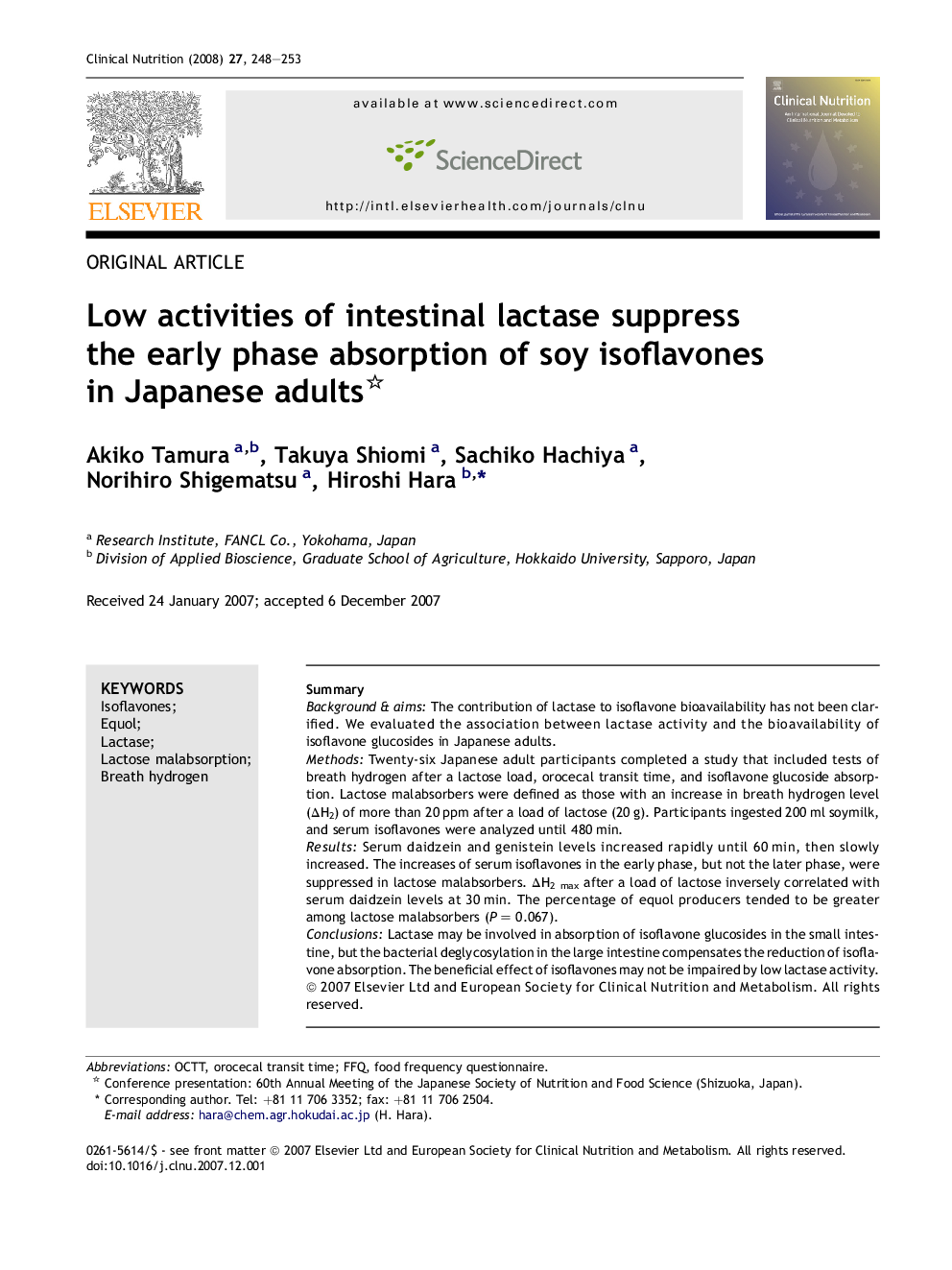| Article ID | Journal | Published Year | Pages | File Type |
|---|---|---|---|---|
| 2687683 | Clinical Nutrition | 2008 | 6 Pages |
SummaryBackground & aimsThe contribution of lactase to isoflavone bioavailability has not been clarified. We evaluated the association between lactase activity and the bioavailability of isoflavone glucosides in Japanese adults.MethodsTwenty-six Japanese adult participants completed a study that included tests of breath hydrogen after a lactose load, orocecal transit time, and isoflavone glucoside absorption. Lactose malabsorbers were defined as those with an increase in breath hydrogen level (ΔH2) of more than 20 ppm after a load of lactose (20 g). Participants ingested 200 ml soymilk, and serum isoflavones were analyzed until 480 min.ResultsSerum daidzein and genistein levels increased rapidly until 60 min, then slowly increased. The increases of serum isoflavones in the early phase, but not the later phase, were suppressed in lactose malabsorbers. ΔH2 max after a load of lactose inversely correlated with serum daidzein levels at 30 min. The percentage of equol producers tended to be greater among lactose malabsorbers (P = 0.067).ConclusionsLactase may be involved in absorption of isoflavone glucosides in the small intestine, but the bacterial deglycosylation in the large intestine compensates the reduction of isoflavone absorption. The beneficial effect of isoflavones may not be impaired by low lactase activity.
